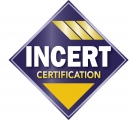ANPI inspects, tests and approves foam extinguishing systems:
- Approval of drawings and calculation notes
- On-site acceptance testing
- Periodic inspections
To save lives and/or property, a fire must be quickly and reliably detected and signalled at an early stage, in order to initiate an entire series of actions. If a risk analysis shows that the time between fire detection and the start of extinguishing operations is too long, thus leading to an increased risk for occupants, the members of the response/emergency services team and/or for the extent of damages, the space must be equipped with an appropriate extinguishing system. A foam extinguishing system is one option.
The system buyer determines the requirements which the foam extinguishing system must meet and mentions them in their specifications, after having consulted with all interested parties, i.e. the relevant fire department, the insurance company, the designer, the system installer and, potentially, installers of other fire protection systems. The installer then proceeds with the design, installation and commissioning of the foam extinguishing system. It is then the responsibility of the system user to ensure the proper operation and monitoring (if applicable) of the system and to plan for regular periodic maintenance and checks.
To ensure the compliance of the installed system with the requirements of the specifications, the system owner may (at the request of the relevant fire department and/or insurer) call on an accredited inspection organisation. The standards and specifications applicable to foam extinguishing systems actually state that the acceptance testing and periodic checks must be conducted by a qualified inspection organisation.
ANPI has published, in collaboration with the industry, a TECHNICAL MANUAL (NTN168) which precisely determines the nature and frequency of the required inspections on these systems. More specifically, it defines criteria for foam quality and concentration:
- Quality
Feedback from insurers and from inspections has demonstrated a general problem with automatic foam protection systems.
Quality, which is an essential criterion, does not always reach the expected level. There may be noticeable gaps in terms of fire protection using foam. Therefore, quality must be periodically checked.
- Concentration
To ensure that the automatic foam protection system is effective for the required period of time, it is essential for the foam concentration to be correctly proportionate. It therefore must be regularly measured.






